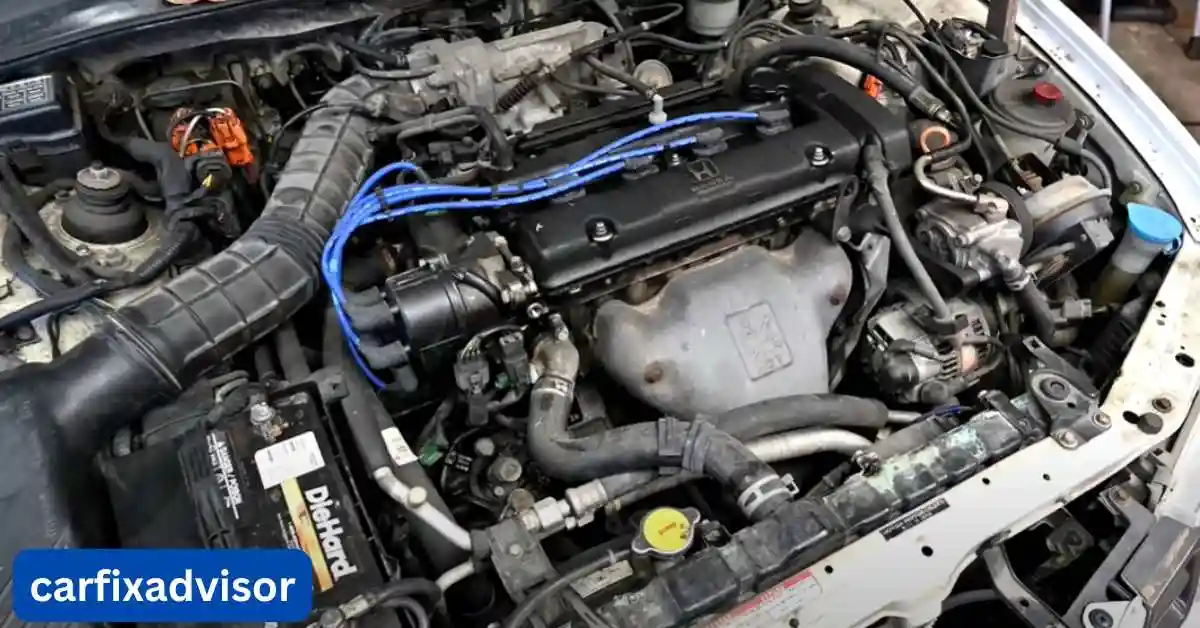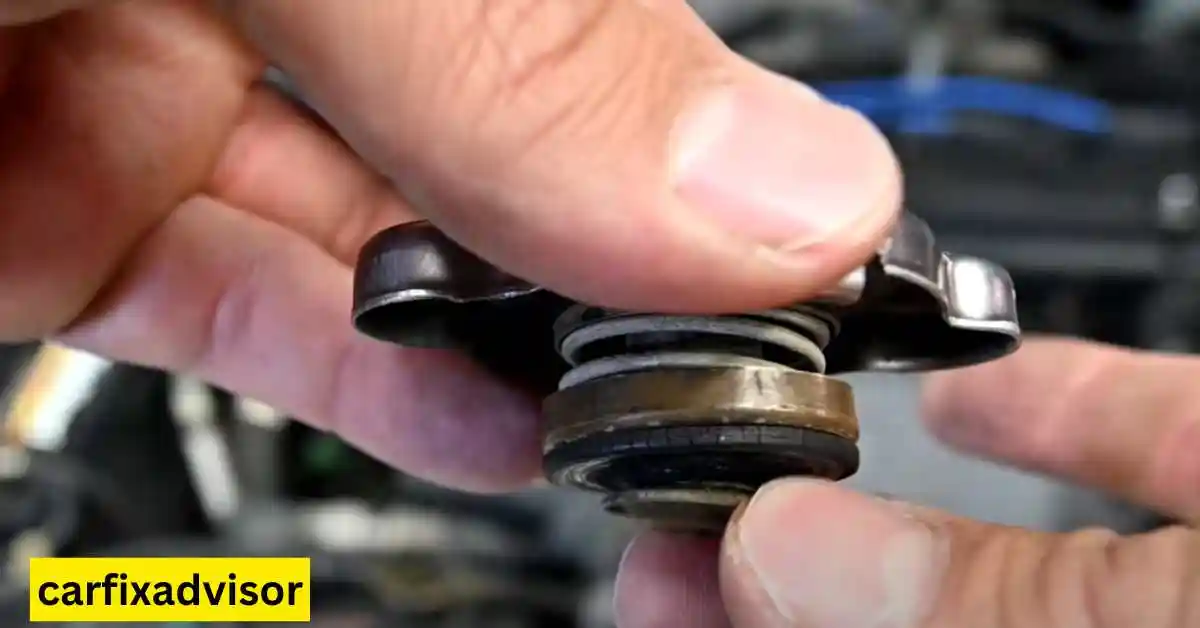When you experience engine overheating, the cause may not always be immediately clear. While most people associate overheating with issues like low coolant levels or a malfunctioning thermostat, there’s another potential culprit that often goes unnoticed – the heater core. A clogged heater core can indeed contribute to engine overheating, and understanding why it happens can help you address it before it becomes a major problem.
What Is a Heater Core?
To understand how a clogged heater core might affect your engine, it’s essential to first define what a heater core is and its role in your vehicle:
Heater Core: A heater core is a small radiator-like device located inside your vehicle’s dashboard. It’s responsible for heating the cabin of the vehicle by transferring heat from the engine’s coolant into the air. The heater core works in tandem with the engine’s cooling system and is an essential component for both climate control and engine temperature regulation.
Coolant Flow: The heater core is part of the vehicle’s cooling system. Coolant flows from the engine to the heater core, where it releases heat into the cabin before returning to the engine to cool down.
How Does a Clogged Heater Core Lead to Overheating?
Now, let’s dive into how a clogged heater core can directly cause your engine to overheat. A clogged heater core disrupts the normal flow of coolant, which can have multiple consequences on your engine’s overall performance.
Here’s how it happens:
Coolant Circulation Disruption
The heater core relies on the engine’s coolant system to move hot coolant into the cabin for heating purposes. When the heater core becomes clogged, coolant cannot flow freely through the system. This reduces the amount of coolant that can circulate in the engine, leading to a rise in engine temperature.Increased Engine Temperature
As coolant circulation is restricted, the engine may not be able to cool down as effectively. This causes the engine temperature to rise, and in severe cases, it can cause the engine to overheat. The engine’s cooling system is dependent on adequate coolant flow, and without it, the system cannot maintain the optimal operating temperature.Pressure Buildup
A clogged heater core can also cause an increase in pressure within the cooling system. The blockage prevents coolant from properly circulating, creating a pressure buildup. This can lead to leaks or cracks in other parts of the cooling system, exacerbating the overheating issue and possibly leading to more severe engine damage.
Symptoms of a Clogged Heater Core
It can be difficult to identify a clogged heater core without proper inspection, but there are a few signs that may indicate a problem. Here’s what to look out for:
1. No Heat in the Cabin
One of the first signs of a clogged heater core is a lack of heat inside the cabin. If your vehicle’s heater is blowing cold air, even when the engine is running at the correct temperature, it could be a sign that the heater core is clogged or malfunctioning.
2. Coolant Leaks Inside the Cabin
A clogged heater core can lead to coolant leaking inside the cabin. If you notice a sweet smell or wetness on the floor mats, particularly on the passenger side, it could be a sign of a heater core leak. This leak may result from pressure buildup due to a blockage, causing coolant to spill into the vehicle’s interior.
3. Foggy Windows
Another symptom of a clogged heater core is foggy or misted windows. This happens when coolant leaks into the vehicle’s air system, creating condensation inside the cabin. This is not only annoying but can be dangerous as it affects visibility.
4. Engine Overheating
As mentioned earlier, a clogged heater core can directly contribute to engine overheating. If your car’s engine temperature gauge is constantly in the red zone, it might be because of reduced coolant flow due to a blocked heater core. While overheating can be caused by various other factors, a clogged heater core is one potential cause.
Causes of a Clogged Heater Core
A clogged heater core can happen for several reasons, and understanding these causes can help you prevent the problem from occurring in the future. Here are the most common causes of a clogged heater core:
1. Debris and Sediment Buildup
Over time, the engine coolant can accumulate small particles, dirt, and debris. These particles can gradually build up inside the heater core, leading to blockages. The buildup of sediment restricts the flow of coolant through the heater core, causing it to clog and impair its functionality.
2. Old or Contaminated Coolant
Old or contaminated coolant is another common cause of heater core clogs. Coolant needs to be replaced regularly to maintain its effectiveness in the engine’s cooling system. If the coolant becomes old or contaminated, it can lose its ability to flow smoothly, leaving behind sludge and debris that can clog the heater core.
3. Improper Maintenance
Regular maintenance of the cooling system is crucial to keeping your car running efficiently. If the cooling system is not flushed and refilled as recommended by the manufacturer, the old coolant and debris can accumulate inside the heater core. This is why it’s important to follow the manufacturer’s guidelines for coolant changes and system flushes to prevent clogging.
4. Leaking Coolant
Leaking coolant can cause the heater core to become clogged over time. If the coolant level is consistently low, it can lead to the formation of sludge and scale inside the heater core, blocking the coolant flow. Leaks in the radiator, hoses, or other cooling system components can cause this issue, leading to long-term heater core problems.
5. Faulty Heater Core Design or Manufacturing Defects
Although less common, sometimes a heater core can become clogged due to manufacturing defects or poor design. If the heater core is made with materials that are prone to corrosion or if the design is inefficient, it can become more susceptible to clogs and leaks. In such cases, replacing the faulty heater core is the only solution.
How to Fix a Clogged Heater Core
If you suspect that your heater core is clogged, it’s important to address the issue as soon as possible to prevent further engine overheating and damage. Here are the steps to take to fix a clogged heater core:
1. Flush the Heater Core
Flushing the heater core is one of the most common methods for clearing out a clog. This process involves using a special flushing solution to push water or cleaning fluid through the heater core to remove any debris or sediment. Flushing the heater core may solve the problem and restore proper coolant flow.
2. Replace the Heater Core
In cases where flushing does not solve the issue, replacing the heater core may be necessary. Replacing a clogged heater core can be a complex and labor-intensive job, often requiring the removal of parts of the dashboard. For this reason, it is typically best to leave the replacement to a professional mechanic.
3. Check the Coolant System
After flushing or replacing the heater core, ensure that the entire coolant system is checked for any other issues, such as leaks or faulty components. This will help prevent future problems and ensure that the cooling system works efficiently.
4. Regular Maintenance
To prevent a clogged heater core from occurring in the future, make sure to perform regular maintenance on your vehicle’s cooling system. This includes flushing the coolant system and replacing the coolant as recommended by the manufacturer. Regular maintenance will help keep the heater core and other critical components of the cooling system in good condition.
Preventing Heater Core Clogs
Preventing a clogged heater core is much easier than dealing with the consequences of an overheated engine. Regular care and attention to your vehicle’s cooling system can save you time, money, and the headache of dealing with costly repairs. Here are some key tips to keep your heater core clean and functioning properly:
1. Regular Coolant Changes
Coolant is the lifeblood of your engine’s cooling system, and changing it regularly is one of the most effective ways to prevent a clogged heater core. Over time, coolant can break down and accumulate debris, which can contribute to clogs in the system. Check your vehicle’s manual for recommended coolant change intervals, typically every 30,000 to 50,000 miles.
2. Flush the Cooling System
Flushing the entire cooling system every few years helps remove any sediment or debris that could build up in the heater core. A flush not only clears out the heater core but also ensures that the entire system is functioning properly. Most mechanics will perform a cooling system flush during routine maintenance.
3. Use the Right Coolant
Always use the manufacturer-recommended coolant for your car. Different vehicles require different types of coolant, and using the wrong one can lead to corrosion and poor coolant flow. Be sure to use high-quality coolant that is compatible with your engine’s cooling system.
4. Inspect for Leaks
Regularly inspect the cooling system for leaks in the radiator, hoses, or water pump. Leaks can cause the coolant level to drop, leading to inefficient cooling and potential clogs in the heater core. If you notice any leaks, get them repaired promptly to avoid future issues.
5. Avoid Contaminants in the Coolant
Contaminants like dirt, oil, and debris can damage the cooling system and clog the heater core. Be cautious when adding or replacing coolant and ensure that the system is properly sealed. Using a clean funnel and handling the coolant with care can prevent contamination.
When to Consult a Mechanic
While it’s possible to flush and maintain the heater core on your own, some issues may require professional attention. If you notice persistent signs of overheating, coolant leaks, or a lack of heat despite your efforts, it’s time to take your vehicle to a professional mechanic. A clogged heater core might be a symptom of a larger issue with the cooling system, and a qualified mechanic can diagnose the problem accurately and make the necessary repairs.
Conclusion
A clogged heater core is more than just an inconvenience. It can cause engine overheating and contribute to further damage to your vehicle’s cooling system if left unchecked. Regular maintenance, coolant changes, and timely repairs can help prevent this issue and keep your car running smoothly. If you suspect your heater core is clogged, addressing the issue early can save you from costly repairs down the line.
FAQs On Can a Clogged Heater Core Cause Overheating
1. What are the symptoms of a clogged heater core?
The symptoms of a clogged heater core include:
- No heat in the cabin: If your heater blows cold air even when the engine is at operating temperature, the heater core may be clogged.
- Coolant leaks inside the cabin: A clogged heater core can cause coolant to leak onto the passenger side, leading to a sweet smell or wetness on the floor mats.
- Foggy or misted windows: If you notice fogging on the inside of the windows that doesn’t clear up, coolant leaking from the heater core might be the cause.
- Engine overheating: Since the heater core is part of the engine’s cooling system, a blockage can reduce coolant flow and lead to engine overheating.
2. Can a clogged heater core overheat an engine?
Yes, a clogged heater core can contribute to engine overheating. When the heater core is blocked, it restricts the flow of coolant through the engine’s cooling system. This reduced circulation can prevent the engine from staying at its optimal temperature, causing the engine to overheat.
3. Will a coolant flush fix a clogged heater core?
A coolant flush may help remove some debris or sediment from a partially clogged heater core, but it won’t always fix a fully clogged one. If the heater core is severely blocked, it may require a more thorough cleaning or even replacement. A flush is worth trying if the clog is mild, but more serious issues might need professional attention.
4. How do I prevent my heater core from getting clogged?
To prevent your heater core from clogging, it’s important to perform regular maintenance on your vehicle’s cooling system. This includes:
- Flushing the cooling system regularly to remove debris and contaminants.
- Replacing the coolant at recommended intervals.
- Inspecting the radiator and hoses for leaks or signs of damage.
- Ensuring the correct type of coolant is used for your vehicle.
5. How much does it cost to fix a clogged heater core?
The cost to fix a clogged heater core can vary depending on the severity of the problem. If the heater core needs to be replaced, the cost can range from $500 to $1,500, including labor and parts. If a flush is enough to fix the issue, it will typically cost much less, usually around $100 to $150.


